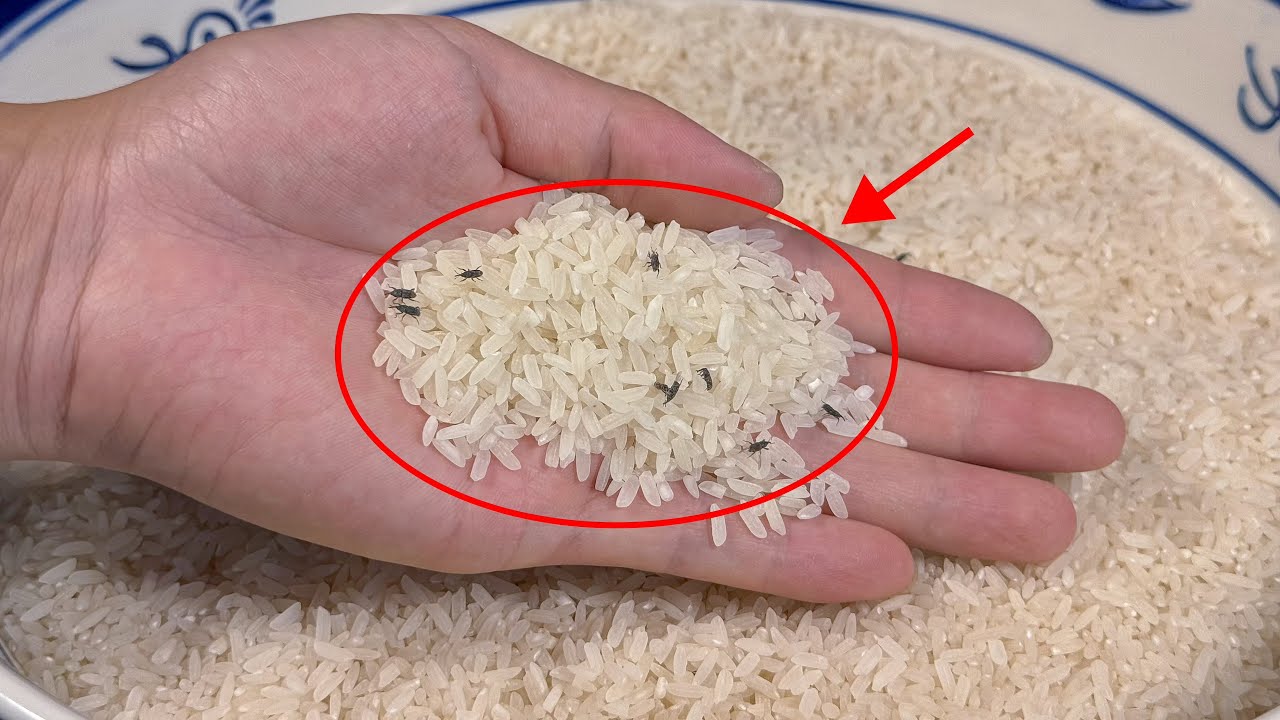ADVERTISEMENT
#### Step 3: Wash the Rice
After sifting out the visible pests, it’s a good idea to wash the rice thoroughly. Place the rice in a large bowl and cover it with water. Swirl the rice around gently with your hands, then drain the water. Repeat this process 2-3 times until the water runs clear. Washing the rice not only removes any remaining bugs but also helps get rid of dust or dirt that may have settled on the grains during storage.
#### Step 4: Heat the Rice (Optional)
If you want to be extra cautious and ensure that all the insects are gone, you can heat the rice to kill any remaining larvae or eggs. You can do this by placing the rice in an oven-safe dish and baking it at a low temperature (around 150°F or 65°C) for about 20 minutes. Alternatively, you can spread the rice out on a baking sheet and place it in direct sunlight for a few hours. The heat will kill any remaining pests and their eggs, rendering the rice safe to consume.
#### Step 5: Inspect the Pantry and Dispose of Infested Rice
Once your rice is clean and free of worms, it’s important to inspect the rest of your pantry for any other signs of pest infestations. Look for small holes in the packaging or grains of rice with visible larvae. If the infestation is widespread, it may be best to discard the entire bag of rice and any other contaminated items to prevent further contamination.
Make sure to store your rice in airtight containers in the future to keep bugs out. Glass jars, sealed plastic containers, or resealable bags are all good options for storing rice safely.
### How to Prevent White Worms in Rice:
Now that you’ve successfully removed the white worms from your rice, it’s time to take steps to prevent them from coming back. Here are a few tips to keep your rice and other pantry items safe from pests:
1. **Proper Storage**: Always store rice in an airtight container. This will help protect the rice from pests and also maintain its freshness. Consider using glass jars or plastic containers with tight-fitting lids to keep your rice safe from contamination.
2. **Inspect Your Pantry Regularly**: Check your pantry every few months to catch any signs of infestation early. Look for small holes in bags, webbing, or the presence of live bugs.
3. **Use Bay Leaves**: Some people swear by placing a few bay leaves in their rice containers. The smell of bay leaves is thought to deter pests. This natural method can be an easy and non-toxic way to protect your rice.
4. **Keep Your Pantry Clean**: Regularly clean your pantry shelves by wiping them down with a vinegar solution to remove any traces of food or insect eggs. Keeping your pantry tidy makes it harder for pests to thrive.
5. **Freeze Your Rice**: If you’ve purchased rice in bulk or have stored it for a long time, freezing the rice for 3-5 days can help kill any eggs or larvae before they have a chance to hatch and infest your rice. Simply place the rice in a sealed bag or container and put it in the freezer.
### Can I Still Eat Rice with White Worms?
While finding white worms in your rice is certainly unpleasant, it’s important to know that they are typically harmless. If you’ve properly washed and heated the rice, it should be safe to eat. The key is ensuring that the rice is clean and free from any remaining larvae or eggs. If you’re uncomfortable consuming it, however, feel free to discard the infested rice and start fresh.
### Conclusion:
Finding white worms in rice may seem alarming at first, but with the right cleaning techniques, it’s easy to remove them and prevent future infestations. By following the steps outlined above, you can safely clean your rice and enjoy it without worry. Remember to store your rice in airtight containers and regularly check your pantry to avoid future issues. With these simple steps, you’ll be able to keep your pantry pest-free and your rice as fresh as the day you bought it!
ADVERTISEMENT
